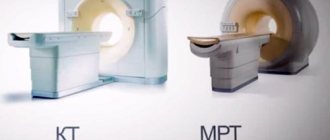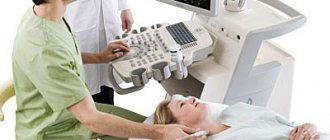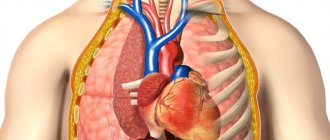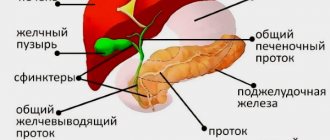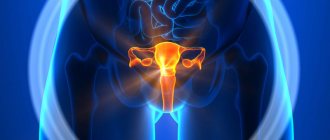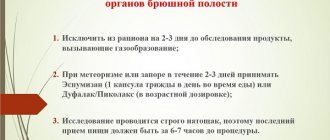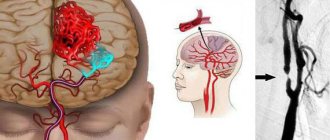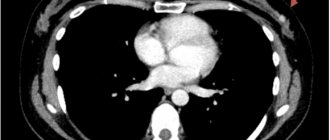The ear is a rather complex organ in its structure. It consists of three sections: the outer, middle and inner ear. The outer ear refers to the pinna and auditory canal. Here the doctor can perform the examination without additional tools and devices. The middle ear includes the tympanic cavity and the auditory ossicles. They are located on the temporal bone. The last section of the ear contains bone canals, which convert waves into nerve impulses and are also responsible for the sense of balance.
Very often, ear diseases are not so easy to diagnose during examination. Today, modern ear diagnostics is called ultrasound, which makes it easy to detect any pathologies and changes. In addition, ultrasound of the ear does not have a dangerous effect on the human body, so modern medicine can resort to it quite often.
Ultrasound of the ear
Ultrasound examination of the ear helps to obtain reliable information about the structure and condition of the ears. This procedure is carried out using ultrasonic waves on the organ, while some light rays are absorbed, others are sifted, which contributes to the appearance of an image on the monitor. The information obtained helps determine the state of the organ, whether pathologies and abnormalities occur in it, or whether everything is in order today.
Symptoms
Let's find out what signs are inherent in diseases of the inner ear
With internal otitis, patients often complain of dizziness, sometimes they also experience ear pain and noise. Often labyrinthitis leads to imbalance. In addition, a decrease in the level of auditory perception also often accompanies this disease. Symptoms are most pronounced when a person shakes his head sharply.
Other symptoms
Pain may appear in the temples, radiating to the back of the head, or in the half of the head where the temple is located.
General weakness and severe malaise are also inherent in these diseases.
Frequent dizziness, as well as impaired coordination of movements. Sometimes dizziness can lead to nausea and vomiting.
A high temperature is a possible, but not necessary, sign of inner ear disease.
There is noise in the ears, and a general decrease in the level of auditory perception is noticeable.
Indications
In cases where it is necessary to study the state of the internal structure of organs, as well as to identify progressive changes in it, ultrasound of the ear is an undeniable assistant.
During an ultrasound examination you can:
- diagnose the presence of fluid, air accumulation in the ear cavity;
- detect swelling;
- identify polyps, tumors and cysts;
- determine the condition of the eardrum and adjacent organs.
Attention! Ultrasound cannot always diagnose a 100 percent reliable condition of the inner ear, since this is hampered by the temporal bone. Therefore, doctors also use other research methods.
Ultrasound diagnostics perfectly helps to determine diseases of the outer ear, ear canal and auricle, parotid region, pathological formations, identify the degree of neglect of the disease and assess the condition of nearby organs.
The essence of the method
Ultrasound examination (ultrasound) of the ear is based on differences in the degree of absorption and reflection of ultrasonic waves by tissues with different densities. The ultrasound machine's sensor simultaneously sends and records an ultrasound signal. A black and white image of the outer ear is displayed on the monitor screen, each structure is coded with a certain shade of gray depending on its density.
Ultrasound examination can only reveal pathology of the outer ear. The middle and internal sections are hidden by the temporal bone, impenetrable to ultrasound waves.
Ultrasound allows you to see the external auditory canal and the auricle, surrounding tissues, the eardrum, and parotid lymph nodes. If you need to visualize blood flow in the ear structures themselves or in a tumor formation, the doctor may prescribe a Doppler study of local vessels. In this case, on the screen of the ultrasound machine you will see a red-blue image showing multidirectional flows. Blue color shows the blood flow from the sensor, red - in its direction.
Contraindications
There are no special contraindications to ultrasound of the ear, but there are cases in which it is extremely undesirable, and it is necessary to use other diagnostic methods.
The use of ultrasound is prohibited:
- with severe injury to the auricle and obvious mechanical damage in the ear canal;
- at too early stages of pregnancy.
There are also situations in which “ultrasound” cannot bring significant results:
- with acute inflammation of the middle ear occurring behind the temporal bone (in this case, ultrasonic waves cannot penetrate through obstacles);
- in case of severe pain and fever, when a person is forced, first of all, to rush to see a doctor to prescribe urgent treatment, and only after that use other methods of influencing the body, including diagnostic ones, in order to identify an accurate diagnosis.
Thus, ultrasound of the inner ear is an indispensable tool in identifying health problems. Such ear diagnostics are prescribed to identify most pathologies of the ear cavity as one of the most effective methods, but it is always worth considering contraindications and first consulting a doctor.
Ultrasound of the ear: the effectiveness of the examination, indications for its implementation
If you experience regular pain in your ear, you should definitely consult a doctor. Such a symptom may indicate serious pathologies of the auditory organ. Self-medication in this case can lead to complications, including hearing loss. But hearing is a very important ability necessary for normal perception of the environment.
Introduction
Inner ear
is located in the pyramid of the temporal bone and consists of two parts, one of which is inside the other. Both parts are a labyrinth and are the most complex in structure and functionally important part of the hearing organ.
Most often, MRI of the inner ear is performed as part of a comprehensive diagnosis of the condition of the brain and skull bones. In a situation where the presence of individual symptoms requires a highly specialized examination, the patient is prescribed a magnetic resonance scan of this particular area.
Ultrasound of the ear: the effectiveness of the examination, indications for its implementation - Website about
› Head and throat 04/16/2019
Diseases of the outer ear are detected by otoscopy (examination of the ear and external auditory canal through a special mirror). Ultrasound of the ear is often performed to diagnose diseases of the parotid region. Ultrasound of the middle and inner ear is not performed, because these formations are located in the pyramid of the temporal bone, and ultrasound cannot effectively penetrate the bones.
Why undergo an ultrasound examination of the ear?
05.09.2018
The ear is a complex organ consisting of three sections: external, middle and internal.
The outer part, including the auricle and external auditory canal, is accessible to visual inspection.
However, even after seeing a pathology of the outer ear, an otolaryngologist cannot always immediately make an accurate diagnosis. There are situations when it is necessary to conduct an additional examination - ultrasound of the ear.
Preparation
Be sure to remove your earrings before the procedure
Before the ultrasound diagnostic procedure, you need to prepare. There are no specific rules here, as with ultrasound of other organs, but at the same time it is necessary to comply with general requirements:
- children need to be explained how the procedure will take place so that they feel calm and confident;
- the auricle and ear canal must be prepared by cleaning with a damp cotton swab;
- it is also necessary to free the ear from jewelry;
- fulfill all the requirements of the diagnostician performing the procedure.
Treatment
Let's find out exactly how diseases of the inner ear should be treated.
First of all, it should be noted that, unfortunately, not all diseases in this case can be cured. If, for example, the auditory receptors die off or the organ of Corti becomes scarred, there is no way to restore hearing. In severe cases, hearing aids sometimes help.
Conventional treatments
Drug therapy
With the help of special medications, the symptoms of inflammation are eliminated, as well as the symptoms of intoxication.
To treat many pathologies of the inner ear, one has to resort to drugs that stimulate neurological processes, as well as the vascular system. Specific treatment is always prescribed by a doctor based on the results of preliminary diagnosis and a thorough examination.
Surgical intervention
This type of medical care is resorted to when it is necessary to eliminate the symptoms of suppuration: you need to open the inner ear, sanitize it, and clean it. In addition, sometimes surgery is performed to restore deformed organs or to install implants.
Physiotherapeutic methods
These procedures help restore damaged tissues and promote their healing. The procedures have the best effect when they are combined with the introduction of medications into the ear canals.
In addition to the above, special exercises aimed at restoring balance, as well as various breathing techniques, can also be of considerable benefit.
But how ear plugs are treated with hydrogen peroxide, and how effective it is, is described in this article.
It will also be interesting to learn about how to put drops in your own ear.
Maybe
How to diagnose
Ultrasound of the ears is performed as follows:
- the patient needs to take a lying position;
- It is first recommended to remove all jewelry from the ears and neck;
- the ear area is lubricated with a cleaning solution;
- the research device is called a specific solution, after preliminary purification (this solution forms a connecting medium);
- The patient also follows additional instructions from the doctor and answers to questions.
When filling out an ultrasound form, the doctor can clarify the presence of pain in a particular area of the ear; it is necessary to answer truthfully so as not to mislead the specialist. These are especially questions about the timing of the disease and symptoms.
The doctor also evaluates the ear canal and its parameters in order to compare them with the norm.
Thus, after the procedure is completed, the patient receives a form with the results of the study, with which he is sent to his attending physician to prescribe further actions.
Methodology
Ultrasound of the ear is performed with patients lying down, having previously lubricated the area under study with a special solution that acts as a connecting medium.
Preparation
No special preparation is required for the examination. It is better for children to calm down before a planned diagnosis, show or tell them what will happen so that they are not afraid.
Procedure
The patient may be advised to remove ear jewelry. To obtain high-quality informative data, you simply need to follow the instructions of the doctor conducting the study.
Decoding the results
When performing an ultrasound, the doctor measures the necessary parameters, which are entered into a special form. An experienced specialist interprets the results and makes a preliminary diagnosis based on the indicators.
An ultrasound will show everything
Ultrasound of the ear is one of the most powerful and effective methods of medical diagnosis of hearing disease. It is necessary to prepare methodically for the procedure, take into account all the doctor’s instructions during the diagnosis, you need to point out all the troubling problems, without hiding anything, so as not to mislead the doctor.
In otolaryngology, this technique is used quite often and shows very good results. It also helps diagnose inflammation of the lymph nodes behind the ears. Timely identification of a dangerous disease allows you to prevent negative consequences in advance. This is the main goal of this type of diagnosis. Take care of your health and take care of yourself.
Kinds
Diseases of the inner ear have very serious consequences: complete deafness is one of them. If we talk about the location of the inner ear, then it is located at the very end of the auditory system - this is its outermost internal section. Due to its extremely complex and intricate structure, the inner ear is sometimes also called a labyrinth. It is not clear why there is blood coming from the ear, why hearing is lost? Let's look at the pathologies that most often affect the inner ear.
Internal otitis (labyrinthitis)
This disease most often affects the inner ear. Labyrinthitis is an inflammation resulting from the penetration of pathogenic microbes into the depths of the auditory organs. The usual cause of this disease is otitis media.
Internal otitis
Sometimes, as a result of the penetration of a large number of microbes, and in the complete absence of treatment, an extensive purulent infection develops due to internal otitis. This infection can even lead to inflammation of the meninges, so-called meningitis. This disease often causes complete deafness, especially if it occurs in a child.
Labyrinthitis can also occur due to mechanical damage or trauma. For example, a woman may accidentally poke a hairpin into her ear, causing an infection. And children often place a foreign body in their ear, which also causes an inflammatory process.
Video of internal otitis:
Doctors distinguish two types of this disease:
- limited;
- spilled.
With limited labyrinthitis, the infection does not spread beyond the inner ear, but with diffuse labyrinthitis, it covers all the “nooks and crannies” of the internal auditory organs, and often leads to complete deafness. In addition, labyrinthitis can be serous and purulent.
The serous type of the disease is milder in nature, and it rarely has severe complications. But the purulent variety leads to the proliferation of bacteria in the inner ear and an inflammatory process. This suppuration can completely destroy the auditory receptors and the cochlea, which is responsible for the sensitivity of auditory perception.
But what and what means to use when the ear is blown is described in this article.
It will also be interesting to know whether it is possible to heat the ear with otitis media or not.
What first aid is needed when a child has an earache, and what should be used first, is described in this article: https://prolor.ru/u/detskoe-zdorove-u/bol-v-ushax-u-rebenka- pervaya-pomoshh.html
What are the reasons why the inside of the ear itches and hurts, and what remedies should be used first, are described in this article.
Meniere's disease
In this case, damage to the inner ear leads to problems with coordination of movements and balance. In addition, Meniere's disease leads to frequent dizziness and problems with auditory perception. The immediate cause of the disease is that fluid from the endolymphatic canal of the vestibular apparatus enters the inner ear.
Meniere's disease
Meniere's disease most often occurs in people with inflammatory infections in the middle ear, after traumatic brain injuries of varying severity. Upper respiratory tract infections also sometimes cause this disease. The following factors provoke Meniere's disease:
- long-term use of aspirin;
- smoking;
- frequent drinking of alcohol.
Excessive consumption of coffee and salty foods can also provoke the development of the disease.
Traumatic lesions
In this case, pathologies of the inner ear are associated with various mechanical deformations, including:
- ruptures;
- displacement of cartilage;
- fractures;
- hematomas, etc.
Congenital underdevelopment
This type of pathology has been present in humans since childhood. It leads to complete or partial impossibility of auditory perception. Sometimes timely medical intervention is able to eliminate the problem that interferes with hearing, and sometimes not. If, for example, the cochlea has not developed in the ear or the organ of Corti is missing, hearing cannot be restored.
Neoplasms
These formations include tumors (including oncological ones), growths of epithelial tissue, and polyps.
Cochlear neuritis
In simple terms, this is hearing loss that appears as a result of some kind of disease of the internal auditory organs. The cause of the disease in this case affected the auditory nerve or receptors, which is why there was a decrease in auditory perception.
Otosclerosis
This disease leads to pathological growth of bone tissue in the inner ear, which leads to complete blockage of the hearing organs and, as a result, to deafness.
Malfunctions of the vestibular apparatus
If, as a result of an infectious disease (including a cold), microbes have penetrated the vestibular apparatus, the person begins to experience noticeable problems with coordination of movements.
This type of pathology is characterized by frequent dizziness, and the gait becomes unsteady.
